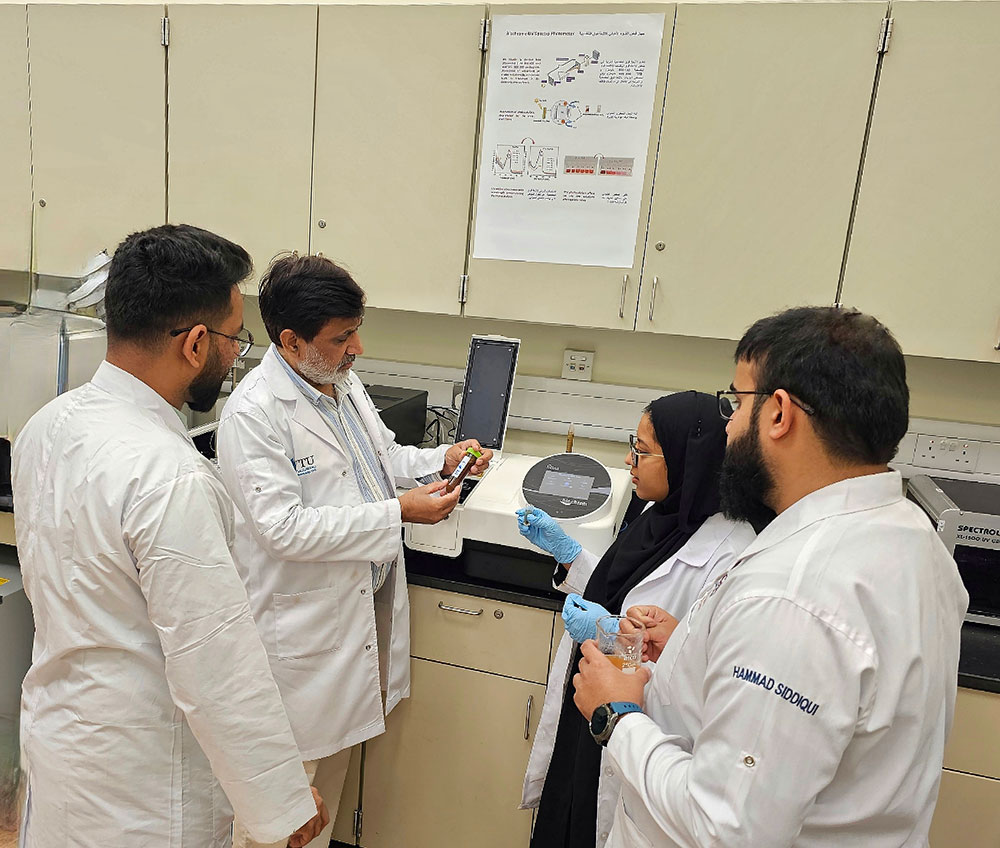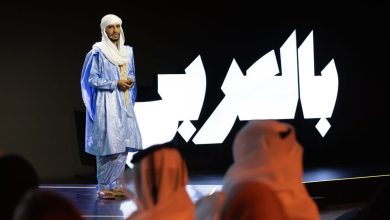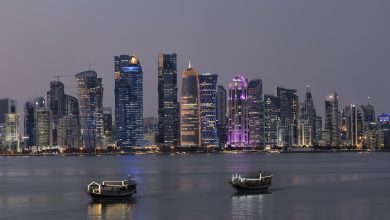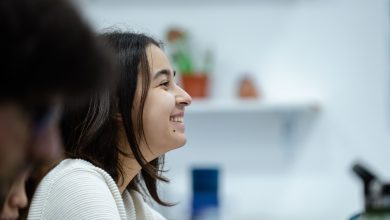QU Researchers Develop Innovative Nanomaterial From Date Palm Waste
فريق بحثي من جامعة قطر يبتكر طريقة لإنتاج نقاط الجرافين من سعف النخيل
QNA
Doha: Qatar University (QU) research team led by Prof. Syed Javaid Zaidi, UNESCO Chair in Desalination and Water Technology, have pioneered a sustainable method for the preparation of innovative nanomaterial, graphene quantum dots (GQDs) from date palm leaf waste in a momentous revelation.
This trailblazing approach, which began its journey in January 2022, uses water as a solvent, achieving a virtually chemical-free synthesis of GQDs and spotlighting a notable advancement in eco-friendly scientific methods.
The significance of this discovery gains even more weight when one considers the context of the Gulf countries, including Qatar, where date palm is the main fruit tree produced in the nation. Date palm is a major agricultural product in the semi-arid and arid areas of the world, particularly in Qatar and in the GCC countries. The region is dotted with vast stretches of date palm trees, an intrinsic part of the cultural and natural landscape. The date production internationally has increased from 7.1 to 9.45 million metric tons from 2010 to 2020 and there are over 62 million date trees in the Middle East and North Africa. The 16th largest date-producing nation in the world is Qatar and as of 2010, there were 581,336 date palm trees covering 2469 ha, producing 21,491 MT of dates.
These trees generate high quantities of agricultural waste in the form of dry leaves, seeds, etc. It is estimated that 2 million tons of dry palm fronds are generated annually during the date harvest, however, the immense waste generated from these trees, predominantly in the form of discarded leaves and branches, pose environmental challenges.
This waste is now being ingeniously repurposed into a product of paramount scientific and commercial importance. The findings of which have been published in the world-renowned journal of the American Chemical Society, ACS Omega, entitled “Sustainable preparation of graphene quantum dots from date palm tree leaves,” underscoring the global significance and the rigorous quality of the research undertaken.
UNESCO Chair Prof. Syed Javaid Zaidi expressed profound enthusiasm about this achievement, and said: “Beyond the evident scientific strides, this innovation is a testament to how local resources can be transformed into cutting-edge solutions. It encapsulates the spirit of sustainable advancement, intertwined with national heritage. This synthesis not only underscores our commitment to environmentally centered research but undeniably boosts our national pride.” Graphene Quantum Dots (GQDs) have transformative potential for TV, laptop, and mobile screens. Due to their ability to absorb and emit a wide spectrum of light, screens can display richer colors. Their high quantum yield can lead to brighter displays while using less power, extending battery life in portable devices. The inherent flexibility of GQDs can enable the creation of bendable screens, and their stability promises longer-lasting displays. All these properties combined can result in slim, efficient, and vibrant displays, although their commercial application is still under research. Currently, the team is harnessing the synthesized material as a nanomaterial to enhance the performance of desalination membranes, specifically improving their wettability and anti-fouling characteristics.
Commenting on this innovation, Prof. Mariam Al-Maadeed, Vice President for Research and Graduate Studies at QU, said by transforming a local challenge into an opportunity of global relevance, QU displays not only a stride in technological innovation but also a manifestation of national pride rooted in sustainable and culturally resonant practices.
This pioneering innovation is the testament of QUs Center for Advanced Materials (CAM) high-level research conducted at the Water Technology Unit and its contribution to the community and the country, said Dr. Mohammed Irshidat, Director of CAM.
This unique innovation, by turning palm waste into a valuable resource, not only addresses local challenges but also contributes to global sustainability objectives of United Nations Sustainable Development Goals, exemplifying Qatar’s commitment to a sustainable and resilient future.
قنا
الدوحة: ابتكر فريق بحثي من جامعة قطر طريقة مستدامة لإنتاج نقاط الجرافين الكمومية (GQDs) من سعف النخيل ، ما يفتح آفاقا جديدة لتطبيقات مختلفة صديقة للبيئة.
وتعرف نقاط الجرافين الكمومية بأنها جسيمات نانوية من صنع الإنسان، ولخصائصها الاستثنائية، تعد مادة أساسية في التطبيقات الصناعية؛ البيولوجية والبيئية وأجهزة أشباه الموصلات وغيرها من التطبيقات والصناعات الإلكترونية الجديدة.
وقال الدكتور سيد جاويد زيدي، أستاذ كرسي اليونسكو لتكنولوجيا المياه في مركز المواد المتقدمة بجامعة قطر، رئيس الفريق البحثي : “تمتلك نقاط الجرافين الكمومية إمكانات تحويلية لشاشات التلفزيون والكمبيوترات والهواتف المحمولة؛ نظرا لقدرتها على امتصاص وإصدار نطاق واسع من الضوء، يمكن للشاشات عرض ألوان أكثر ثراء”.
وأضاف: “في ضوء هذا الابتكار يمكن أن يؤدي الإنتاج الكمي العالي من نقاط الجرافين الكمومية إلى صناعة شاشات أكثر سطوعا مع استخدام طاقة أقل، وإطالة عمر البطارية في الأجهزة المحمولة”.. مبينا أن المرونة المتأصلة في نقاط الجرافين الكمومية يمكن أن تتيح إنشاء شاشات قابلة للانحناء وتدوم طويلا.
وتابع: “كل هذه الخصائص مجتمعة يمكن أن تؤدي إلى شاشات نحيفة وفعالة وحيوية، على الرغم من أن التطبيق التجاري لهذا الابتكار لا يزال قيد البحث”.. مشيرا إلى أن الفريق “يعمل حاليا على تسخير المادة المصنعة كمادة نانوية لتعزيز أداء أغشية تحلية المياه، وتحديدا تحسين قابليتها للبلل وخصائصها المضادة للترسبات”.
ويكتسب هذا الاكتشاف أهمية كبيرة بالنظر إلى البيئة المحلية في منطقة الخليج الغنية بأشجار نخيل التمر، وما تنتجه هذه الأشجار من كميات كبيرة من المخلفات الزراعية على شكل أوراق جافة وبذور وغيرها.
وتحتل قطر مرتبة متقدمة بين الدول المنتجة للتمور في العالم، حيث تشير أحدث الإحصاءات إلى وجود ما يقرب من 700 ألف شجرة نخيل تغطي مساحات شاسعة من البلاد.
وتعليقا على هذا الابتكار، قالت الدكتورة مريم المعاضيد نائب رئيس البحث والدراسات العليا بجامعة قطر: “إن الجامعة من خلال تحويل التحدي المحلي إلى فرصة ذات أهمية عالمية لا تعرض فقط خطوة في مجال الابتكار التكنولوجي، ولكن أيضا تقدم مظهرا من مظاهر الفخر الوطني المتجذر في الممارسات المستدامة المبهرة ثقافيا”.
وبدوره، قال الدكتور محمد أرشيدات مدير مركز المواد المتقدمة في الجامعة: “إن هذا الابتكار الرائد هو شهادة على الأبحاث رفيعة المستوى التي أجراها مركز المواد المتقدمة في وحدة تكنولوجيا المياه، ومساهمته في خدمة المجتمع والدولة”.
ويأمل القائمون على الدراسة، التي نشرت نتائجها في مجلة الجمعية الكيميائية الأمريكية ذات الشهرة العالمية؛ أن يؤدي هذا الابتكار الفريد إلى تحويل مخلفات النخيل إلى منتج ذي أهمية علمية وتجارية قصوى، لا يعالج التحديات المحلية فحسب بل يساهم أيضا في تحقيق أهداف الأمم المتحدة للتنمية المستدامة العالمية، مما يجسد التزام قطر بمستقبل مستدام ومرن.




